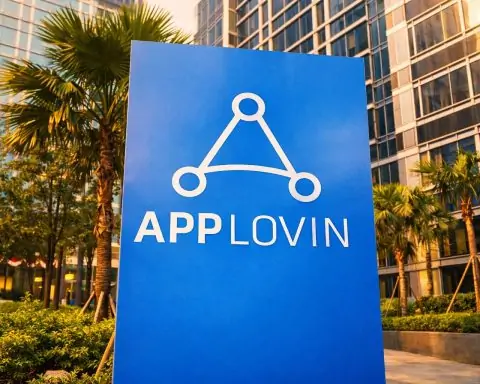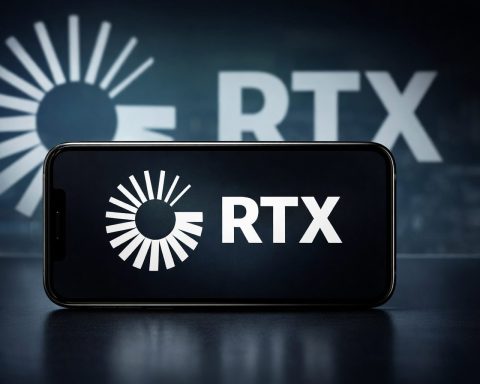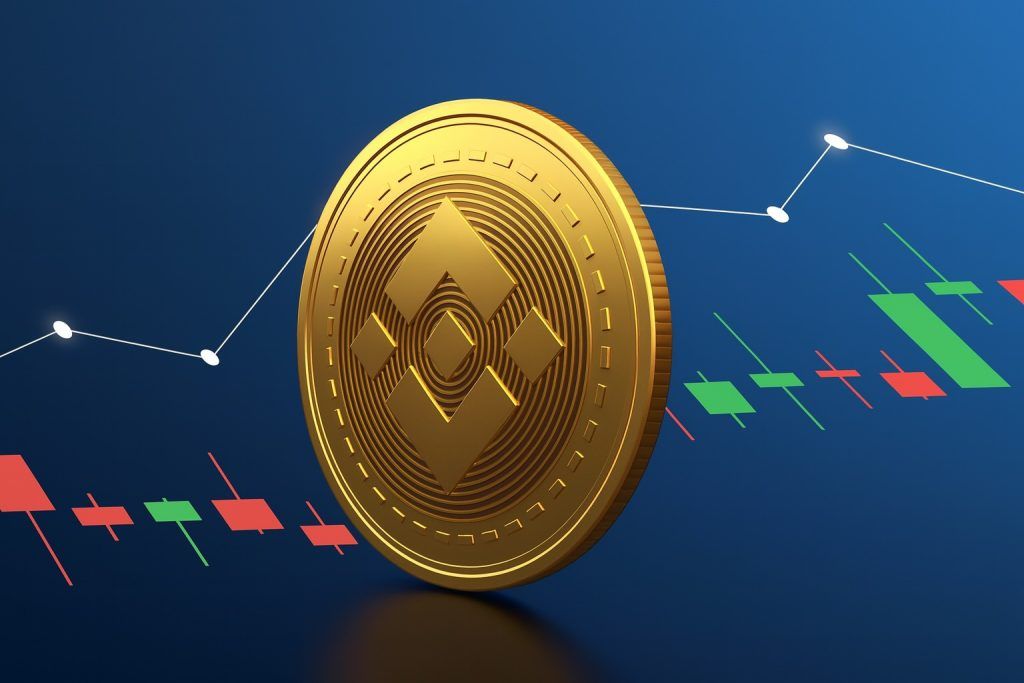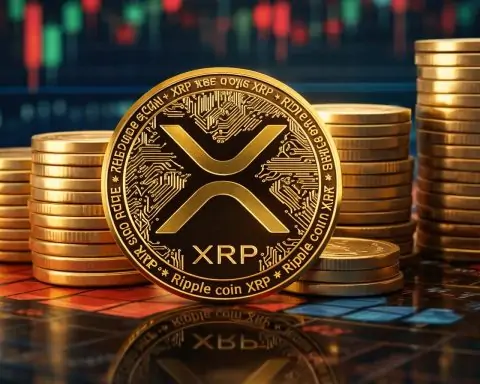- Uptober Price Rally: Solana’s SOL token jumped roughly 9% in early October 2025, touching about $227 – its highest levels since January – amid broad “Uptober” crypto market optimism [1] [2]. This follows a late-September spike to an eight-month high of $253 and a swift pullback to ~$192 on profit-taking and ETF uncertainty [3].
- ETF Decisions Loom: Multiple spot Solana ETF applications (from Grayscale, Bitwise, Fidelity, VanEck, etc.) face SEC review in October 2025, with the first approval decision due October 10 [4] [5]. A U.S. government shutdown threatened to delay these deadlines, but regulators signaled progress by asking exchanges to re-file under new standards – hinting at readiness to greenlight products [6].
- Big Institutional Bets: Investors are pouring into Solana. Galaxy Digital withdrew $724 million of SOL from exchanges in September [7] to help power a $1.65 billion Solana treasury fund (Forward Industries) backed by Galaxy, Jump Crypto and Multicoin [8]. Nasdaq-listed VisionSys AI announced a $2 billion Solana allocation plan (partnering with Marinade Finance) to stake SOL for yield [9] [10]. These join other public firms collectively holding over $3 billion in SOL treasuries [11].
- Ecosystem Growth & Tokenization: Solana’s DeFi liquidity is surging – total value locked (TVL) on Solana surpassed $30 billion, and it has processed over $100 billion in decentralized exchange volume for three consecutive months [12]. Institutional DeFi activity is rising too: Circle expanded its $635 million tokenized U.S. Treasury fund (USYC) onto Solana [13], and platform Republic is tokenizing equity in Animoca Brands via Solana to broaden investor access [14] [15]. Solana remains a top NFT chain as well, though 2025’s focus has shifted to real-world asset (RWA) tokenization and high-volume finance use cases.
- Technical Strides: The Alpenglow network upgrade (imminent as of Oct 2025) is set to slash Solana’s transaction finality from ~12 seconds down to ~0.15 seconds [16], reinforcing Solana’s reputation for speed. Jump Crypto’s Firedancer team proposed removing Solana’s 60 million compute-unit per block limit to unleash bigger blocks, potentially boosting throughput in peak demand periods [17] [18]. And over 22% of staked SOL is already using the new DoubleZero high-speed validator network, which provides Solana nodes a dedicated fiber-optic “fast lane” for more reliable, low-latency communication [19] [20].
- “New Wall Street” Narrative: Experts are increasingly bullish on Solana’s role in traditional finance disruption. Bitwise CIO Matt Hougan argues Solana’s ultra-fast throughput and near-instant finality make it “extraordinarily attractive” for investors, dubbing it “the new Wall Street” of tokenized assets [21] [22]. Galaxy Digital’s Mike Novogratz went as far as calling this the “season of SOL,” as Solana’s mix of technical prowess and incoming ETF-driven inflows could catalyze a major run [23]. Still, cautious voices note Solana must prove its resilience and decentralization to silence past critiques of network outages and centralization.
Solana’s Price Performance: Uptober Rally After Volatile September
Solana’s market momentum has turned decisively positive entering October 2025. After a rollercoaster September, SOL kicked off “Uptober” with a strong rally of roughly 9% in the month’s first few days, climbing from the low-$200s to about $227.50 by October 2 [24]. This upward surge outpaced much of the crypto market and marks Solana’s highest price region since early 2025 [25]. It’s a remarkable comeback considering that just a week prior, SOL had briefly plunged back below $200 – dropping to around $192 on September 25–26 [26] – amid short-term profit-taking and jitters around a then-uncertain U.S. government shutdown impacting the SEC’s schedule for crypto ETF decisions.
The late-September volatility came after Solana spiked to an eight-month high of $253 (on September 18) following a flurry of bullish catalysts [27]. That rally – a swift 25%+ jump – was fueled by mounting speculation that Solana could be next in line for institutional adoption, including potential approval of the first spot SOL exchange-traded funds. When SOL surged to $253, it vastly outperformed Bitcoin and Ethereum over the same period [28], reflecting renewed investor enthusiasm for Solana. However, the token’s rapid ascent also prompted a wave of profit-taking; within days, SOL retraced nearly 20% from its peak, highlighting the near-term fragility of such a momentum-driven move [29].
By early October, Solana found its footing again. Analysts noted that bullish market sentiment (“Uptober”) returned as the broader crypto market rallied, helping SOL rebound into the $220+ range [30]. Technically, Solana’s price formed higher lows on longer time frames despite the sharp correction, keeping its overall uptrend intact. Market observers pointed out that SOL’s recent consolidation around the mid-$220s could be a healthy pause before its next major move. In fact, CoinDesk’s data showed SOL trading in a narrow $228–$237 channel through October 3–4 – a sign of consolidation as traders awaited the upcoming SEC ETF ruling and other catalysts [31] [32]. Historically high trading volumes accompanied the initial rally, then tapered off during the consolidation phase, suggesting many short-term traders stepped aside after the late-September turbulence [33].
Short-term outlook: Technical analysts see potential for another leg up if key resistance levels break. Cointelegraph notes SOL is eyeing the $250 zone again in the near term – the upper bound of a long-standing rising wedge pattern – provided Uptober momentum continues [34] [35]. Successfully clearing ~$250 could even target the high-$200s (near Solana’s all-time high around $260 from 2021). On the downside, failure to hold support around $185–$200 could trigger a deeper pullback, with chart patterns implying 20–30% downside risk if bearish momentum builds [36] [37]. For now, traders seem cautiously optimistic: SOL’s Relative Strength Index (RSI) flashed oversold in late September, a signal that has preceded short-term bottoms four out of five times since 2025 began [38] [39]. That historical pattern appears to be playing out again with the early October bounce.
Major Developments in the Solana Ecosystem (DeFi, NFTs & Partnerships)
Solana’s recent price action is underpinned by a flurry of positive developments in its ecosystem. From decentralized finance to real-world assets and NFTs, activity on Solana is ramping up:
- DeFi Liquidity Boom: Solana’s network has witnessed surging DeFi usage in 2025. According to a report by Brazil’s BTG Pactual, Solana processed over $100 billion in DEX trading volume for three consecutive months this summer [40] – a level of on-chain trading activity surpassed only by Ethereum. Meanwhile, Solana’s total value locked in DeFi protocols has grown to over $30 billion (a new all-time high), indicating deepening liquidity across lending platforms, decentralized exchanges, and staking protocols [41]. This reflects a strong recovery and expansion of Solana’s DeFi ecosystem, which had contracted after the 2022 bear market. Leading Solana DeFi protocols like Marinade Finance (liquid staking) now command multi-billion dollar TVLs, and new entrants continue to launch. Institutional interest is climbing as well; BTG’s analysts note that pending spot ETF approvals could channel even more capital into Solana DeFi, as SOL-based yield strategies become accessible to traditional investors [42].
- NFTs and Web3 Gaming: Solana remains one of the busiest NFT blockchains, second only to Ethereum in monthly transaction volume for non-fungible tokens. Its low fees and fast finality have made it a hub for NFT mints and Web3 gaming assets. Top Solana marketplaces like Magic Eden continue to facilitate high-volume NFT trading, especially for gaming-related collections [43]. While the overall NFT market cooled in 2025, Solana’s NFT community is still active – but notably, investor focus has broadened beyond profile pictures. Many Solana projects are now blending NFTs with gaming and metaverse use cases, or integrating real-world asset ownership, aligning with the network’s push into tokenized assets. This diversification means Solana’s value proposition isn’t limited to collectibles; it’s evolving into a broader platform for digital asset ownership and exchange.
- Real-World Asset Tokenization: A standout theme in late 2025 is Solana’s growing role in tokenizing traditional assets, often termed Real-World Assets (RWA). In the first week of October, Circle announced it has expanded its $635 million tokenized U.S. Treasurys fund (USYC) to Solana [44]. USYC tokens represent shares in a short-term Treasury money market fund and can now move on Solana’s network, benefiting from its low-cost, fast settlement for use in Solana’s DeFi apps. The tokenized Treasurys market has tripled to ~$8 billion this past year amid surging institutional demand [45] [46], and Solana’s inclusion alongside Ethereum and a few others underscores confidence in its infrastructure. In a similar vein, fintech firm Republic is leveraging Solana to tokenize equity in Animoca Brands – a major Web3 venture company. This will create Solana-based digital shares of Animoca that can be traded on Republic’s marketplace, opening up a previously private investment to a wider pool of investors [47] [48]. Animoca’s co-founder hailed the move as aligning with the company’s Web3 ethos, and the Solana Foundation’s president called it “a glimpse of the future” where private equity can tap global liquidity via blockchain [49] [50]. These initiatives highlight Solana’s strategic positioning as an infrastructure for traditional finance assets, not just crypto-native tokens.
- Mainstream Partnerships: Solana’s real-world traction is further evidenced by partnerships and integrations. Payments giant Stripe and PayPal both expanded support for Solana in their crypto offerings over the past year, leveraging Solana for fast, low-cost transactions (Stripe in particular chose Solana to help launch new crypto payment pilots). Circle’s USDC stablecoin – the second-largest stablecoin – has a strong presence on Solana, facilitating remittances and payments. Even Galaxy Digital decided to tokenize its own stock on Solana via a platform called Superstate [51], citing Solana’s efficiency. And in the derivatives space, CME Group recently launched regulated futures and options for Solana alongside Bitcoin and Ether, giving institutions new ways to gain exposure [52]. All of these developments paint a picture of a maturing ecosystem: Solana is increasingly plugged into the traditional finance world, from tokenized Treasurys and equities to being listed on major regulated exchanges and products.
Network Upgrades & Performance: Speed, Scalability and Reliability
Solana’s reputation has always been built on speed and throughput, and 2025 is seeing major upgrades that double down on those strengths while addressing past pain points (like occasional outages). Recent and upcoming technical developments include:
- Alpenglow Upgrade (Near-Instant Finality): Solana core developers are rolling out “Alpenglow,” a significant upgrade that will dramatically cut transaction finality times on the network. Currently, a Solana transaction achieves final confirmation in around 12 seconds. Alpenglow is set to shrink that to a blistering ~150 milliseconds (0.15s) [53] – effectively near-instant finality. This kind of latency is unprecedented among major blockchains (for context, Ethereum’s finality is around 1–2 minutes with optimistic confirmations, or longer without layer-2 solutions). Such speed could enhance user experience in trading and gaming applications, making Solana feel as responsive as web databases. Bitwise’s Matt Hougan highlighted that Solana’s settlement speed improved from ~400 microseconds to 150 microseconds in recent tests [54] [55] – an unclear unit mix-up in reporting, but either way an orders-of-magnitude leap in performance. The takeaway: Solana is becoming as close to real-time as it gets in blockchain, which is a major selling point for high-frequency finance applications.
- Firedancer & Bigger Blocks: A dedicated Solana client team at Jump Crypto (called Firedancer) has proposed a bold scalability change: removing Solana’s block compute limit to allow much larger blocks and more transactions per block [56] [57]. Currently, each Solana block has a cap of 60 million “compute units” (a measure of computational effort) to prevent validator overload. Firedancer’s proposal (SIMD-0370) would lift this cap entirely after the Alpenglow upgrade, effectively letting validators include as many transactions as their hardware can handle in each block [58] [59]. The idea is to unlock a new regime of throughput: during surges of demand (NFT mints, DeFi trading spikes, etc.), Solana could absorb far more transactions without hitting an artificial ceiling. Proponents say this flexibility will reduce congestion and failed transactions in peak times [60], by utilizing Solana’s full technical capacity. Some skeptics note that today Solana blocks aren’t consistently full, so the immediate effect may be limited [61] – but as usage grows, the headroom could prove crucial. This proposal underscores Solana’s philosophy of vertical scaling (maximizing single-chain performance) as opposed to sharding or Layer-2 schemes. It’s currently under discussion in Solana’s developer community and expected to follow on the heels of Alpenglow.
- DoubleZero “Fast Lane” Network: To tackle the network’s reliability and consistency, a new project called DoubleZero went live on mainnet-beta in October. DoubleZero is essentially a private, high-speed fiber optic network connecting Solana validators to each other [62] [63]. Instead of relying solely on the public internet – which can be unpredictable and introduce latency – Solana nodes on DoubleZero transmit data through dedicated fiber routes for faster and more stable communication. Think of it as a fast lane or express highway for Solana’s consensus messages and block propagation [64]. Impressively, about 22% of all staked SOL (i.e. validators representing roughly a fifth of the network’s stake) have already joined the DoubleZero network at launch [65] [66]. Major backers include Jump Crypto, Galaxy, and others who provided infrastructure and funding (DoubleZero raised $28 million earlier this year to build this, at a $400 million valuation [67]). By reducing lag and communication hiccups, DoubleZero aims to improve Solana’s throughput and uptime, mitigating the kind of network stalls that hit Solana in its early days. The project even secured a no-action letter from the SEC to proceed with its own token distribution [68], showing regulators’ willingness to allow innovative network improvements. In time, DoubleZero plans to expand this high-speed backbone to other blockchains, but Solana is the first to benefit [69]. For end users, this behind-the-scenes upgrade should translate to an even more reliable network performance, especially during traffic bursts.
- Ongoing Decentralization & Stability Efforts: Solana’s developers remain conscious of past criticisms – notably that Solana sacrificed some decentralization for speed, and that it suffered a handful of high-profile outages in 2021–2022. In 2025, measures are in place to ensure greater stability. The core protocol has added features like priority fees (to help manage congestion) and is working on local fee markets per block. Validator participation has grown, and new node clients like Firedancer will add redundancy to Solana’s software stack. While Solana’s design is still more complex and resource-intensive than many chains (leading to higher hardware requirements for validators), its resilience has improved: the network has operated without major downtime throughout 2025, even under heavy load. Upcoming changes like the above-mentioned upgrades are expected to further reduce the odds of any single bottleneck causing an outage. Essentially, Solana is maturing from a “move fast and break things” approach toward a more robust, institutional-grade blockchain – without losing the performance edge that sets it apart.
Institutional Adoption, ETFs and Regulatory Outlook
One of the biggest narratives driving Solana’s resurgence is the wave of institutional interest cresting in late 2025. Solana is increasingly seen as a top contender for traditional investors looking beyond Bitcoin and Ethereum. Several factors highlight this trend:
- Spot Solana ETFs on Deck: Perhaps most significant is the prospect of SEC-approved Solana exchange-traded funds. Following the U.S. approval of multiple spot Bitcoin ETFs in 2024, asset managers quickly filed for similar Solana-backed products. Seven major firms – including Grayscale, Bitwise, Fidelity, VanEck, 21Shares and more – filed spot SOL ETF applications, all queued for review in fall 2025 [70]. The SEC’s initial decision for the first of these (Grayscale’s) is due by October 10, 2025 [71], with others facing final deadlines later in the month (several by Oct. 16 and one by Oct. 24) [72]. This timeline turned October into a potential make-or-break month for Solana’s institutional narrative. Any approval would mark the first time U.S. investors could buy a Solana-linked fund on stock exchanges, likely unleashing new inflows. Even the anticipation has been bullish – SOL’s 24% price jump in the month leading up to October was largely attributed to ETF excitement [73]. As Bitwise’s CIO Matt Hougan put it, the same recipe of “ETF inflows + corporate treasury buys” that drove Bitcoin and Ether’s rallies is now forming around Solana [74] [75]. The market is essentially front-running a potential “institutional moment” for Solana.
- Regulatory Signals: The regulatory environment for Solana in the U.S. is a mix of promising and cautionary signals. On one hand, the SEC’s active engagement with Solana ETF filings – including multiple rounds of comments and a request for exchanges to use new listing standards [76] – suggests a willingness to bring SOL into the regulated fold (industry insiders believed some approvals could land as soon as mid-October, barring any government shutdown delays [77]). This contrasts with the SEC’s stance in mid-2023, when it labeled SOL (and several other tokens) as unregistered securities in enforcement actions against exchanges. That overhang hasn’t entirely vanished, but the momentum toward regulated investment vehicles indicates shifting winds. Indeed, Hougan noted that leaders of the SEC and Bank of England, and BlackRock’s CEO have all publicly endorsed the disruptive potential of blockchain, stablecoins, and tokenization in finance [78]. Even SEC Commissioner Hester Peirce has encouraged tokenization efforts under the right frameworks [79]. All of this bodes well for projects like Solana that aim to work within regulatory guidelines (e.g., Republic ensuring the tokenized Animoca equity complies with securities laws [80]). However, it’s not a free pass: Solana and its backers will need to maintain transparency and decentralization to avoid regulatory pitfalls. The looming U.S. election and potential crypto legislation in 2025 add uncertainty – but so far, Solana’s increasing institutional adoption is happening with regulators watching, and in some cases, tacitly approving (as seen with the DoubleZero no-action letter and possible ETF nods).
- Big Money Flows & Treasuries: Outside of ETFs, big investors are already accumulating SOL directly. In September, Galaxy Digital moved over $700 million of SOL off exchanges into custody [81], an eye-popping haul that corresponded with the launch of Forward Industries’ Solana treasury initiative. Forward (a public company pivoting to crypto) raised $1.65 billion to buy and stake SOL, turning it into a yield-generating asset on its balance sheet [82]. This drew parallels to MicroStrategy’s Bitcoin strategy – with Forward’s co-founder Kyle Samani likened to “the Michael Saylor of Solana” [83]. Following Forward, at least three other public companies (Defi Development, Upexi, and now VisionSys AI) have announced sizable SOL holdings or purchase plans [84]. VisionSys, for example, is a Beijing-based AI firm that just unveiled a plan to acquire $500 million in SOL within 6 months (on its way to a $2 billion target), working with DeFi staking leader Marinade to generate yield [85]. These treasury moves collectively put over $3 billion of SOL into corporate coffers [86]. The significance: institutions are treating SOL as a strategic reserve asset, drawn by the 6–7% staking yields and Solana’s growth prospects. It’s a virtuous cycle – as more tokens get locked up for staking or treasury purposes, circulating supply tightens, potentially amplifying price moves if new demand (via ETFs or otherwise) arrives.
- Wall Street’s Endorsement: The “smart money” is also voicing support. Billionaire Mike Novogratz of Galaxy has been cheerleading Solana’s potential, recently declaring we may be entering the “season of SOL”, with fresh capital and use cases flowing in [87]. He pointed to Pantera Capital’s comments that SOL could be “next in line for its institutional moment”, since currently less than 1% of SOL’s supply is institutionally held (versus ~16% of Bitcoin and 7% of Ether) [88]. Pantera noted that if a spot ETF is approved, Solana could see a rapid uptick in institutional ownership to close that gap [89]. Additionally, Bitwise’s Hougan has been very vocal: not only did he pen an analysis in September titled “The ingredients are all there” for a Solana rally [90], he also gave Solana a new moniker – “the new Wall Street” – referring to its burgeoning role as the preferred blockchain for stablecoins and stock tokenizations [91] [92]. In Hougan’s view, stablecoins, payments and tokenized securities are poised to transform finance, and Solana’s speed/finality make it “extraordinarily attractive” as the base layer for that future [93] [94]. He predicts “substantial [capital] flows” into Solana as this narrative takes hold [95]. When traditional banking leaders and crypto fund managers start aligning on a narrative (that a network like Solana could handle Wall Street’s throughput), it carries weight in the market’s perception.
- Comparisons to Ethereum & Others: Naturally, comparisons are drawn between Solana and other Layer-1 platforms. Solana’s pitch is distinct from Ethereum’s: rather than offloading activity to layer-2 rollups, Solana aims to scale all on one chain with massive throughput. This has trade-offs – Ethereum prioritizes decentralization and has thousands of nodes (plus L2s like Arbitrum/Optimism for scaling), whereas Solana opts for a smaller set of high-performance validators to achieve speed. Critics argue this makes Solana more centralized and historically prone to validator overload issues [96] [97]. However, supporters counter that Solana’s architecture is justified by use cases that need low latency and high volume (like high-frequency trading, gaming, and global payments) which cannot be easily achieved with sharded or L2 systems [98] [99]. It’s telling that Solana is now third in stablecoin liquidity among blockchains and fourth in tokenized asset volume, with those asset volumes up 140% year-to-date [100] [101]. This indicates real adoption in areas beyond DeFi degens – e.g. everyday USDC transfers and institutional assets – where Solana is often competing more with traditional fintech rails than with crypto rivals. That said, other L1s are not standing still. For instance, Avalanche (also in BTG’s top picks) is gaining traction by enabling institutional “subnets” [102] [103], and Ethereum itself plans future proto-danksharding upgrades to increase throughput. Solana will need to continue executing on its tech roadmap and grow its validator decentralization to maintain an edge. As of October 2025, though, Solana’s unique value proposition – a high-performance, single-layer blockchain with growing network effects – has clearly carved out a strong position in the multi-chain landscape.
Forecasts and Outlook: Bullish Potential with Caveats
Looking ahead, the sentiment around Solana is cautiously optimistic, with a blend of bullish forecasts and acknowledged risks:
Short-Term Catalysts: The immediate focus is on the SEC’s ETF decisions in October. A surprise approval of one or more Solana spot ETFs could trigger a rush of institutional buying, potentially pushing SOL’s price to new multi-year highs. Some analysts believe SOL could quickly revisit or surpass its record high (~$260 from 2021) in a euphoric scenario – especially given Solana’s relatively smaller market cap ( ~$110B [104]) compared to Ethereum or Bitcoin, meaning modest inflows have a bigger percentage impact. On-chain metrics like open interest in Solana futures have already hit record levels in anticipation of these events (open interest reached 72 million SOL on derivatives markets, even as price pulled back [105]), indicating traders are positioning for a big move. If the ETF news is positive, that pent-up positioning could convert to a spike in spot demand.
However, if the SEC delays or denies the Solana ETFs, a short-term correction is likely. Solana’s strong early-October rally means some good news is priced in; any disappointment could see a retrace back toward support around $180 or lower as speculative money exits. Volatility is expected around the mid-October decision window. Beyond ETFs, broader macro trends (like U.S. interest rate policy) will influence crypto sentiment. Fortunately, there are indications that the Federal Reserve’s tightening cycle is easing, which has been bullish for crypto broadly [106]. BTG Pactual’s report pointed to falling bond yields and the prospect of rate cuts in 2025 as tailwinds for assets like Solana, which behave as high-growth, risk-on plays [107]. If macro conditions remain favorable (“lower for longer” rates, no major recession), it strengthens the case for a continued crypto bull run benefitting SOL.
Long-Term Upside: Many industry watchers argue that Solana’s long-term trajectory is pointed up given its expanding use cases. The vision is that in a few years, Solana could be the underlying network for a significant portion of global financial transactions – from stock trading and payments to gaming and social media activities – thanks to its throughput capacity. If that vision materializes, SOL’s valuation could grow multiples from here. Some optimistic projections from late 2024 (when SOL was around $50) saw Solana reaching $500 or more by 2025–2026 in a bull case, which seemed far-fetched at the time. Now with SOL back above $200, those calls are no longer absurd, but achieving them likely requires flawless execution: continued technical robustness, successful onboarding of mainstream applications, and no severe regulatory setbacks.
It’s also worth noting that despite 2025’s impressive recovery, Solana has not yet broken its all-time high. The previous peak near $260 (November 2021) still stands. Prediction markets as of late September gave roughly a 41% probability that SOL sets a new record high by end of 2025 [108], implying tempered expectations [109]. Solana will need sustained real-world adoption to justify prices beyond that level on a lasting basis. Encouragingly, the fundamentals are trending in the right direction – active addresses and transaction counts on Solana are robust, developer activity remains strong (Solana was among top ecosystems for developer commits in 2025), and the range of applications on Solana is diversifying (DeFi, NFTs, social dApps like friend.tech clones, etc.). If this momentum continues, many analysts foresee Solana cementing itself in the top tier of blockchains, potentially challenging Ethereum’s dominance in specific sectors like DeFi and gaming due to its cost and speed advantages.
Risks and Challenges: No outlook is complete without considering the risks. For Solana, a key challenge is maintaining decentralization and security at scale. The network’s rapid evolution (e.g. pushing the limits with bigger blocks, etc.) must be matched by vigilant testing and security auditing. A serious exploit or a major network outage could erode confidence swiftly – though Solana has navigated 2025 so far without such incidents. Another risk is competition: other Layer-1s and Layer-2s are innovating quickly. Ethereum’s roadmap, for instance, could make it more scalable through sharding, while newcomers like Sui or Aptos (also high-speed chains) are vying for similar use cases. Solana needs to keep its developer community engaged and growing to avoid being overshadowed by the next shiny blockchain.
Regulatory risk, while improved in tone, is not entirely gone. If, say, U.S. regulators took a harsher stance on staking or labeled Solana-based tokens as securities, that could impact parts of the ecosystem. Global economic shifts – a return of inflation, a market downturn, etc. – could also dampen the appetite for speculative assets like crypto in general.
Nonetheless, the overall sentiment toward Solana is far more positive than a year ago. Solana has demonstrated resilience (both in price and technology) through the post-FTX bear market, and it emerges in late 2025 with significant tailwinds: high-profile endorsements, real adoption metrics, and a clear roadmap to becoming a backbone for the tokenized economy. As one research report concluded, Solana offers a compelling mix of “scale, competitive cost, and an accelerating network effect” for those seeking exposure to a high-performance blockchain [110]. If Solana continues on this trajectory, it may indeed live up to its nickname as the crypto world’s “New Wall Street” – a place where trillions in assets could eventually change hands on-chain, at the speed of light. Investors and enthusiasts will be closely watching the coming weeks and months as Solana attempts to turn that promise into reality, navigating the opportunities and challenges of its next chapter.
Sources: Recent analysis and news from CoinDesk, Cointelegraph and other crypto analytics platforms have informed this report, including market data and expert commentary on Solana’s status as of October 5, 2025 [111] [112] [113] [114], among others. Each development paints part of the larger picture: Solana is a fast-evolving ecosystem at the forefront of crypto innovation, with growing support from both the crypto community and traditional finance – and it’s entering a critical period that could define its role in the blockchain landscape moving forward.
References
1. cointelegraph.com, 2. www.coindesk.com, 3. cointelegraph.com, 4. www.coindesk.com, 5. cointelegraph.com, 6. www.coindesk.com, 7. www.coindesk.com, 8. www.coindesk.com, 9. www.coindesk.com, 10. www.coindesk.com, 11. www.coindesk.com, 12. www.coindesk.com, 13. www.coindesk.com, 14. www.coindesk.com, 15. www.coindesk.com, 16. www.coindesk.com, 17. www.coindesk.com, 18. www.coindesk.com, 19. www.coindesk.com, 20. www.coindesk.com, 21. www.coindesk.com, 22. www.coindesk.com, 23. www.coindesk.com, 24. cointelegraph.com, 25. www.coindesk.com, 26. cointelegraph.com, 27. cointelegraph.com, 28. www.coindesk.com, 29. cointelegraph.com, 30. cointelegraph.com, 31. www.coindesk.com, 32. www.coindesk.com, 33. www.coindesk.com, 34. cointelegraph.com, 35. cointelegraph.com, 36. cointelegraph.com, 37. cointelegraph.com, 38. cointelegraph.com, 39. cointelegraph.com, 40. www.coindesk.com, 41. www.coindesk.com, 42. www.coindesk.com, 43. 99bitcoins.com, 44. www.coindesk.com, 45. www.coindesk.com, 46. www.coindesk.com, 47. www.coindesk.com, 48. www.coindesk.com, 49. www.coindesk.com, 50. www.coindesk.com, 51. www.coindesk.com, 52. cointelegraph.com, 53. www.coindesk.com, 54. www.coindesk.com, 55. www.coindesk.com, 56. www.coindesk.com, 57. www.coindesk.com, 58. www.coindesk.com, 59. www.coindesk.com, 60. www.coindesk.com, 61. www.coindesk.com, 62. www.coindesk.com, 63. www.coindesk.com, 64. www.coindesk.com, 65. www.coindesk.com, 66. www.coindesk.com, 67. www.coindesk.com, 68. www.coindesk.com, 69. www.coindesk.com, 70. www.coindesk.com, 71. cointelegraph.com, 72. cointelegraph.com, 73. www.coindesk.com, 74. www.coindesk.com, 75. www.coindesk.com, 76. www.coindesk.com, 77. www.coindesk.com, 78. www.coindesk.com, 79. www.coindesk.com, 80. www.coindesk.com, 81. www.coindesk.com, 82. www.coindesk.com, 83. www.coindesk.com, 84. www.coindesk.com, 85. www.coindesk.com, 86. www.coindesk.com, 87. www.coindesk.com, 88. cointelegraph.com, 89. cointelegraph.com, 90. www.coindesk.com, 91. www.coindesk.com, 92. www.coindesk.com, 93. www.coindesk.com, 94. www.coindesk.com, 95. www.coindesk.com, 96. www.coindesk.com, 97. www.coindesk.com, 98. www.coindesk.com, 99. www.coindesk.com, 100. www.coindesk.com, 101. www.coindesk.com, 102. www.coindesk.com, 103. www.coindesk.com, 104. www.coindesk.com, 105. cointelegraph.com, 106. www.coindesk.com, 107. www.coindesk.com, 108. cointelegraph.com, 109. cointelegraph.com, 110. www.coindesk.com, 111. cointelegraph.com, 112. www.coindesk.com, 113. www.coindesk.com, 114. cointelegraph.com










